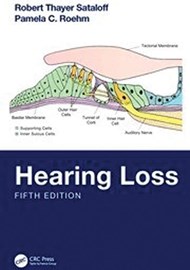The updated fifth edition of Hearing Loss extensively covers the anatomy, physiology, diagnosis and treatment of hearing loss, providing clinicians with valuable insights based on the latest evidence and literature.
The book notably includes expanded chapters on tinnitus, dizziness and facial paralysis, as well as updated information on otoacoustic emissions, sudden hearing loss, hearing protection devices, temporal bone tumours, nutraceutical research and even hearing in dogs. The latter was particularly fascinating and novel, albeit somewhat puzzling given the book’s human-centred focus. Chapter 12, which discusses regenerative therapies for sensorineural hearing loss, was especially enjoyable.
The differential diagnosis tables in chapter 27 are clearly structured, making them an excellent reference for clinicians dealing with a specific set of symptoms. While some chapters feature more up-to-date and insightful figures and illustrations than others, the well-distributed case studies throughout the book help bring the described pathologies to life.
As a UK-based audiologist, I was reminded of the subtle nuances in US / UK terminology and the more significant differences in preferred clinical practices between the two countries – something student readers should keep in mind. Additionally, I found the frequent use of tabulated hearing test results to conflict with my ingrained preference for graphical representations. In an era where AI-generated internet searches often yield inaccurate results, I find comfort in having this book on my shelf as a reliable source of solid information.




